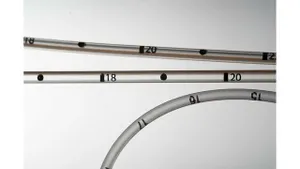Promise of mass adoption of electric vehicles sparks investment in U.S.-based manufacturing
The question remains, however, if electric cars will fuel a robust return on investment.
August 24, 2017

 LG Electronics, which is headquartered in Seoul, South Korea, announced this week that it will invest about $25 million to build a manufacturing plant to produce parts for electric vehicles (EVs) in the Detroit suburb of Hazel Park, MI. In a press statement, LG said its new U.S. plant will manufacture battery packs, and will eventually expand into other key components. LG began supplying parts to General Motors for the Bolt EV about a year ago. This is LG’s first parts manufacturing plant in the United States, but it has existing plants in five countries.
LG Electronics, which is headquartered in Seoul, South Korea, announced this week that it will invest about $25 million to build a manufacturing plant to produce parts for electric vehicles (EVs) in the Detroit suburb of Hazel Park, MI. In a press statement, LG said its new U.S. plant will manufacture battery packs, and will eventually expand into other key components. LG began supplying parts to General Motors for the Bolt EV about a year ago. This is LG’s first parts manufacturing plant in the United States, but it has existing plants in five countries.
While the hope and the hype over electric vehicles remains high, there is some skepticism about EVs, including whether they will become a car for the masses given their cost and how long that might take.
In article in the July 13 edition of the Wall Street Journal, Greg Ip noted, while skepticism in EV’s success appears to be fading somewhat, “progress comes with two big caveats: First, it has relied on extensive public subsidies and, second, it has done little to reduce planet-warming carbon emissions. If electric cars are ever to displace gasoline engines without government’s thumb on the scale, they must not only keep innovating but outrun innovation in fossil fuels.”
KMPG’s Global Automotive Executive Survey 2017 took the temperature on fossil-fuel drive trains and e-technologies and found some eye-opening results. First, internal combustion engines (ICEs) will be important for a long time, as “executives are torn between evolutionary and revolutionary drive-train technologies.” In the KMPG survey, 76% of executives “see ICEs as still more important than electric drive-trains for a very long time.” Twenty-eight percent said they “absolutely agree,” and 48% said they “partly agree.”
KMPG commented in its executive summary, “Ranking 10th on executives’ key trend agenda, downsizing the internal combustion engine is by far no longer a crucial key trend compared to the highly rated electrification trends. OEMs see the importance in continuously managing the mainly evolutionary power-train technology ICE, agreeing that revolutionary electric drive trains still need time for implementation and cannot be easily integrated into existing platform concepts.”
With regard to executives’ views on battery electric vehicles (BEVs), KMPG’s survey found that 62% of executives “absolutely” (22%) or “partly” (40%) agree that BEVs will fail due to infrastructure challenges. Even though battery electric mobility is ranked as the most significant trend, the key issue with pure battery electric vehicles seems to be setting up a user-friendly charging infrastructure, leading 62% of executives to believe that BEVs will fail, said KMPG in its executive summary.
By contrast, notes KMPG, a significant number (78%) of executives “believe fuel-cell electric vehicles (FCEVs) will be the golden bullet of electric mobility while also ranking it under the top-three key trends. The faith in FCEVs can be explained by the hope that FCEVs will solve the recharging and infrastructure issue BEVs face today. The refueling process can be done quickly at a traditional gas station, making recharging times of 25 to 45 minutes for BEVs seem unreasonable. However, this technology is far from market maturity and will bring new unsolved challenges, like the cooling of hydrogen or safe storage in a car.”
Obviously, cost is a huge issue in BEVs. The WSJ’s Ip points to an article in the Journal of Economic Perspectives by economists Thomas Covert, Michael Greenstone and Christopher Knittel. “If batteries cost $270 per kWh, oil would have to cost more than $300 a barrel in 2020 to make electric and gasoline equally attractive,” they write. “If battery costs fall to $100, as Tesla founder Elon Musk has targeted, oil would have to average $90.”
Additionally, BEVs are not really very “green,” as Ip also notes. “Electric vehicles are meant to be recharged at night. Economists Joshua Graff Zivin, Matthew Ketchen and Erin Mansur note in a 2014 article in the Journal of Economic Behavior and Organization that night is when electricity is most likely to come from coal. They estimate that “electric vehicles account for more carbon dioxide per mile than existing cars in the upper Midwest, where coal-fired plants are more prevalent, and more than comparable hybrids in most of the U.S.”
KMPG’s executive summary states that “the majority of consumers do not yet embrace the concept of electric vehicles because the most essential requirements for EVs are not met yet.” These include a superfast charging infrastructure, which will take a long time to build, with progress varying from region to region resulting in fragmented infrastructures. KMPG believes that the survey shows that the challenges with battery cost and charging times “will prove to be an insuperable obstacle to mass acceptance of electric mobility.”
A lot of automotive companies—both OEMs and Tier 1 and even Tier 2 suppliers—are throwing millions of dollars into BEV technology in the belief that these will be the cars for the masses in the near future. That belief, however, comes up against some significant challenges. Companies such as LG and other suppliers should expect a long and winding road to getting their return on investment.
As an inventor of the pultrusion process to replace wooden handles for handheld implements once told me: “Build for the masses, eat with the classes. Build for the classes, eat with the masses.” That’s advice that many in the automotive industry might be wise to consider.
About the Author(s)
You May Also Like




